The de Carteret family, of Normandy stock, have been around in Jersey for nearly 1,000 years. For most of that time they have owned St Ouen’s Manor in the north-west of the Island.
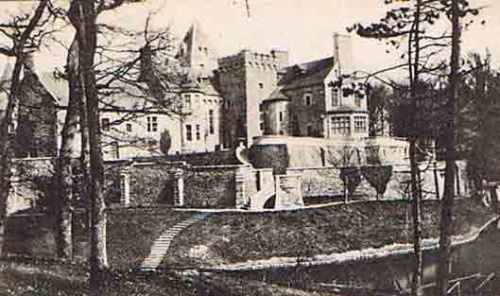
St Ouen’s Manor 1904 (credit Jerripedia)
In 1467 the Seigneur, Sir Philippe de Carteret was peacefully fishing in St Ouen’s Pond, then part of the manorial land. It was during the years of the little-known French Occupation. French soldiers crept up on Sir Philippe, whereupon he mounted his horse and rode for his life.
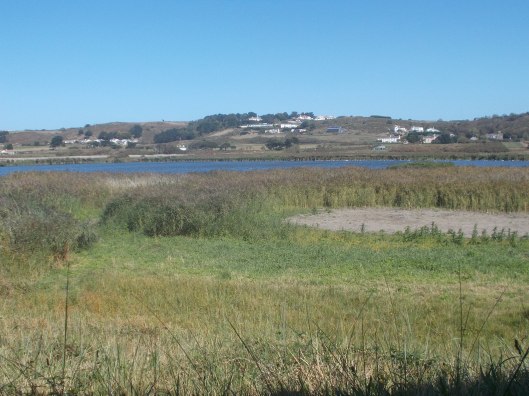
St Ouen’s Pond
It is over a mile, and up a steep escarpment, from the pond to the Manor. His horse tiring, Sir Philippe reached the deep, narrow valley named Les Charrières, just south of the Manor. He would only escape the French if the horse could leap across the chasm. He urged the horse on and just made the other side. The French could not follow and Sir Philippe was safe.
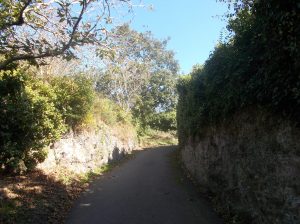
Les Charrieres – was the epic leap here?
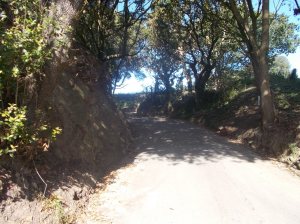
Or here?
But, exhausted by its efforts the horse dropped dead at the entrance to the Manor. Sir Philippe ordered that a portrait be made of the horse and that it be buried in the Manor grounds.
In 1904, bones were unearthed at the Manor. They were sent to the British Museum who concluded that they belonged to a horse which had died over 400 years previously.
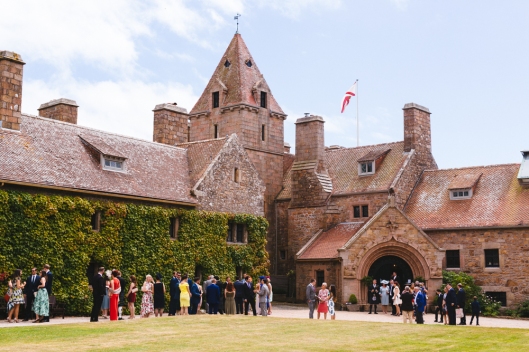
Today, if you are lucky enough to gain admittance to the Great Hall, you can see both the portrait and a bone of the hero horse.

I am family, so great post!
LikeLike
Cheers Ned, it’s a great story.
LikeLike
An interesting story – fascinating that they found those bones so it wasn’t the legend it sounds like at first.
LikeLike
Yes Andrea, the bones were a clincher. It’s too good a story not to be true. All the elements are there though not everyone will agree.
LikeLiked by 1 person
So many amazing stories from such a long history. I love reading these vignettes of Jersey’s past. Thanks, Roy.
LikeLike
Thank you Jane. I like this one, and it was fun to trace the probable line of the chase across present day Jersey.
LikeLiked by 1 person
So much interesting history in Jersey. Thanks for sharing with us, Roy. I hope you’re well.
LikeLike
Thank you Jill. Glad you enjoyed. Unlike me you’re a top blogger friend.
LikeLike
🙂
LikeLike
This is a place I’ll definitely want to explore if I ever get to Jersey. Love the history and artifacts regarding the horse!
LikeLike
Thank you Juliann. I’ve never actually been inside the Manor itself but it’s rich in history. The family is great in opening up the property for events, children’s cross country etc. Maybe your travels will bring you to Jersey one day 🙂
LikeLike
Fascinating story. For the want of a horse (and this lucky man had one when he needed it.) Thanks for sharing.
LikeLike
That proverb is traced back as far as the C13th Pat 🙂 Yes I imagine Sir Philippe had his horse well shod. Probably had his own farrier.
LikeLike
That’s fascinating, Roy. The Channel Islands have such an interesting and unique history. Poor old horse!
LikeLike
Well, not every horse ends up as a portrait to be admired by all 🙂
LikeLiked by 1 person